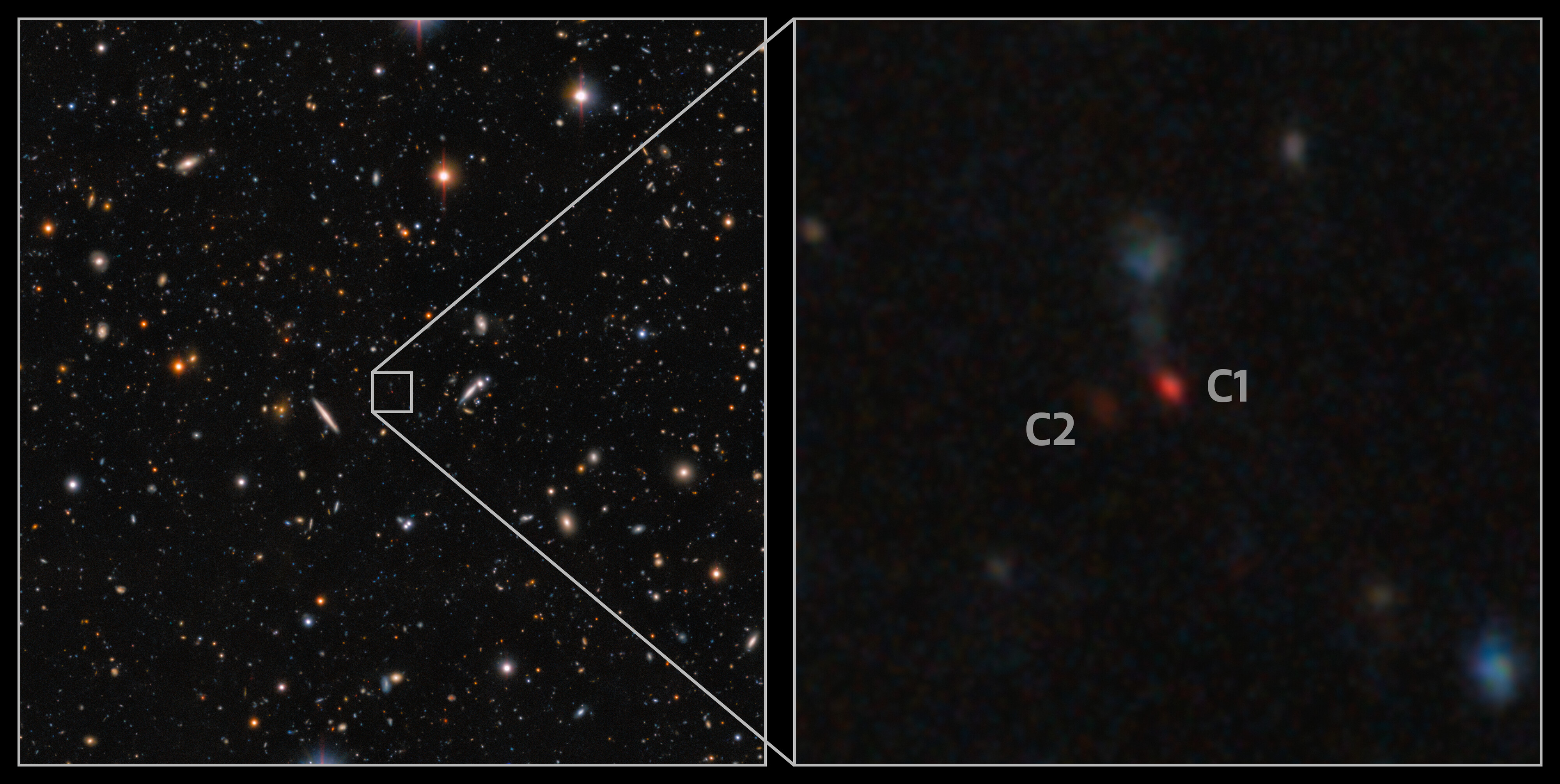Astronomers have found a pair of quasars in the process of merging during the final periods of Cosmic Dawn, around 900 million years after the Big Bang. This is the most distant (and so, earliest) pair of interacting quasars yet found, and it is also the first one that comes from Cosmic Dawn.
Cosmic Dawn is a period that stretches from 50 million to 1 billion years after the Big Bang. Nestled between these dates, there’s the Epoch of Reionization, when the birth of the first stars and galaxies ionized the neutral hydrogen that stretched across the universe. This is a truly mysterious epoch, and finding merging quasars – the active state of a supermassive black hole – here is incredible.
“The existence of merging quasars in the Epoch of Reionization has been anticipated for a long time. It has now been confirmed for the first time,” lead author Yoshiki Matsuoka, an astronomer at Ehime University in Japan, said in a statement.
Using the Subaru and the Gemini North telescopes, the team was able to learn quite a bit about this record-breaking pair. Some of the light from the objects comes from significant star formation in the galaxies. The bulk of it is from the active supermassive black holes, both of them roughly 100 million times heavier than the Sun – so over 20 times heavier than Sagittarius A*, the supermassive black hole at the center of our galaxy.
The team found evidence of a bridge of gas stretching between the two quasars, indicating that their interaction is mirrored at the larger scale of their host galaxies. The pair of galaxies is undergoing a major merger as well. All these findings provide insights into wider questions related to this period of the cosmos.
“The statistical properties of quasars in the Epoch of Reionization tell us many things, such as the progress and origin of the reionization, the formation of supermassive black holes during Cosmic Dawn, and the earliest evolution of the quasar host galaxies,” said Matsuoka.
Image of the merging quasar pair taken with the Hyper Suprime-Cam on the Subaru Telescope. Follow-up analysis with the Gemini North telescope was needed to confirm that these are indeed quasars.
Image credit: NOIRLab/NSF/AURA/T.A. Rector (University of Alaska Anchorage/NSF NOIRLab), D. de Martin (NSF NOIRLab) & M. Zamani (NSF NOIRLab)
The team describes the discovery as “serendipitous”. In the Subaru images, the two red dots – suspected quasars – appeared very similar, extremely red, and extremely close. It took follow-up work with both Subaru and Gemini to confirm their nature, and their distance, and then to begin to unravel their incredible properties.
A study with more details of the finding is published in The Astrophysical Journal Letters. An upcoming companion paper has been submitted for publication to American Astronomical Society Journals and is available on the arXiv.
Source Link: Most Distant Pair Of Merging Quasars Spotted Just 900 Million Years After The Big Bang
